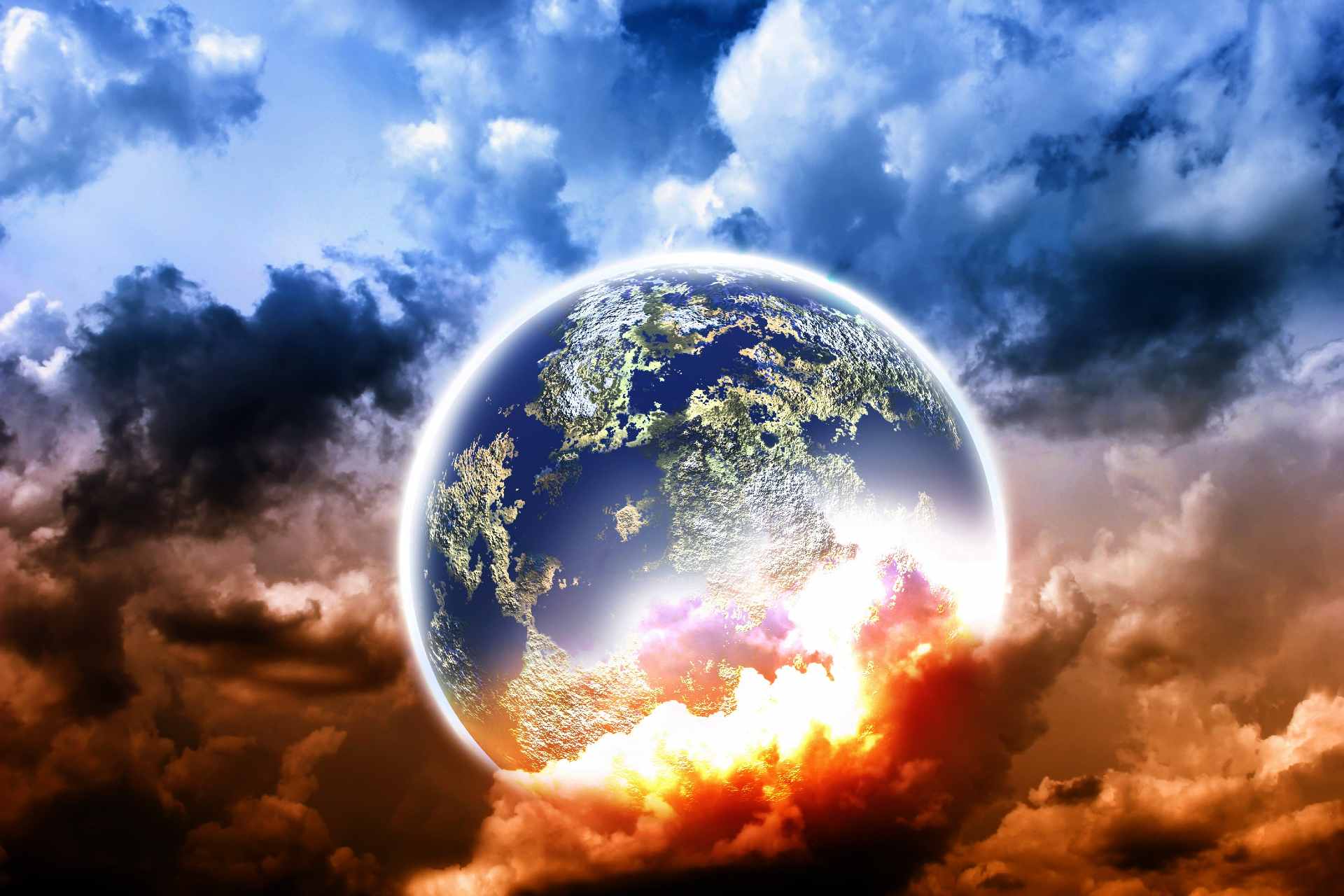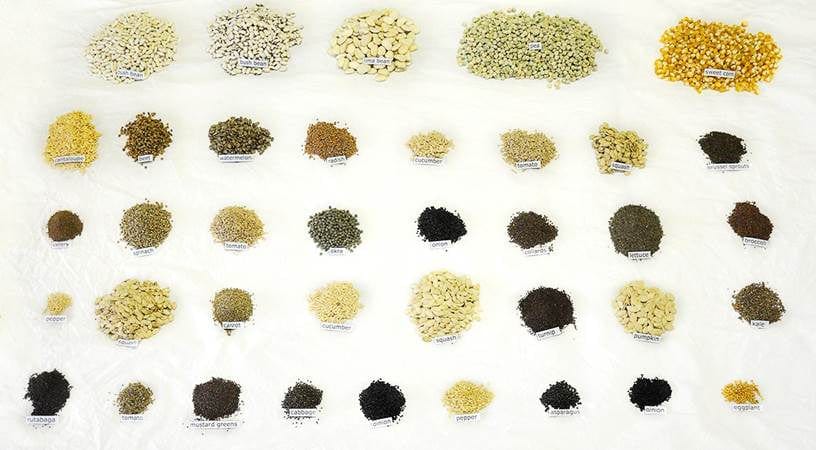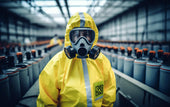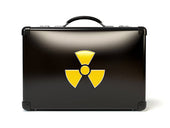Global warming and climate change are happening now, and global temperature has increased rapidly for the past few years. Some people argue that the rise in global temperature is slowing or pausing. However, studies disapprove of this claim.
Scientists say the average global temperature could increase by 10 degrees Fahrenheit in the next century unless we manage our carbon dioxide emissions.
This article will discuss global warming and climate change, their causes, and their effects on our world. We'll also discuss some of the measures done by the international and national bodies to address such issues.
Defining Global Warming and Climate Change

Although these terms refer to different physical phenomena, global warming, and climate have been used interchangeably in scientific articles for years.
Global warming refers to the long-term trend of a rising average global temperature. Merriam-Webster defines it as an increase in the oceanic and earth's atmospheric temperature due to the greenhouse effect from pollution.
On the other hand, climate change refers to changes in the world's climate caused by increasing global temperatures. Examples of climate change include the increased prevalence of heatwaves, droughts, and changes in precipitation patterns.
While the physical phenomena are almost identical, global warming and climate change differ. Human greenhouse gas emissions can cause global warming, which can cause climate change.
Causes of Global Warming
In 2013, the Intergovernmental Panel on Climate Change (IPCC) stated that human influence had been the dominant cause of global warming since the middle of the 20th century.
Human activities have changed the natural greenhouse effect, trapping the sun's warmth in the lower atmosphere.
For the past years, the burning of fossil fuels has increased atmospheric carbon dioxide. Even clearing land for agriculture or other activities has increased concentrations of greenhouse gases.
Certain gases in the world's atmosphere prevent heat from escaping. Gases that remain semi-permanently in the atmosphere are 'forcing' climate change. These gases don't respond physically or chemically to changes in temperature.
At the same time, 'feedbacks' are gases that respond physically or chemically to temperature. An example of this is water vapor. According to NASA, these are the gases that contribute to the greenhouse effect on our planet:

Carbon Dioxide
Carbon dioxide in the planet is caused by respiration, deforestation, volcanic eruptions, burning fossil fuels, and others. It is an important part of the atmosphere. Through the years, the atmospheric concentration of carbon dioxide increased by 1/3; this is considered the long-lived 'forcing' element of climate change.
Chlorofluorocarbons (CFCs)
The CFCs are greenhouse gases. It is a synthetic compound that is an important chemical in various industrial products. International agreements now regulate CFC production because they can contribute heavily to destroying the ozone layer.
Methane
Methane is a hydrocarbon gas produced by several human and natural resources. The decomposition of wastes in agriculture, landfills, domestic livestock, and other sources can produce it. Although methane is less abundant in the atmosphere, unlike CO2, it is also considered an active gas.
Nitrous Oxide
Nitrous Oxide is a powerful greenhouse gas produced by cultivating soil with commercial and organic fertilizers. Fossil fuel combustion, nitric acid production, and biomass burning can also create nitrous oxide.
Water Vapor
Water vapor is the most abundant greenhouse gas. Water vapor increases as the earth's atmosphere warms, causing more clouds and precipitation. Thus, water vapor is an essential feedback of the greenhouse effect.
Can Solar Irradiance cause global warming?
Some researchers believe that changes in the sun's energy output can affect the climate, as the sun is an essential energy source that affects our climate.
For example, the decrease in the sun's activity from 1650 to 1850 triggered the Little Ice Age. According to NASA, this period saw ice cut off Greenland and glaciers advance in the Alps.
On the other hand, some argue that global warming must not be linked to changes in solar energy.
First, solar activities have remained constant since 1750. Second, if global warming is caused by an active sun, warmer temperatures must be expected on all layers of the atmosphere.
We have observed that the upper atmosphere is cool while the lower atmosphere is warm.
Evidence of Climate Change
The Earth's climate has changed dramatically throughout history. In the past 650,000 years, about seven cycles of glacial advance and retreat have occurred. These changes are due to the Earth's orbit and the small variation of solar energy our planet receives.
The current climate situation on Earth is significant because 95% of human activity since the mid-20th century has caused it.
Today, it now proceeds at a rate that was unprecedented for millennia. These are some of the evidence of climate change:

Ice Sheets Shrink and Glaciers Retreat
According to NASA, the Antarctic and Greenland ice sheets shrink due to the earth's increasing temperature.
From 2002 to 2006, Greenland lost 150 to 250 cubic kilometers of ice annually, while Antarctica lost 152 from 2002 to 2005. Thus, the mass of the Greenland and Antarctic ice sheets has decreased.
The satellite observations reveal snow cover in the Northern Hemisphere has decreased over the past 50 years.
In addition, the thickness and extent of the Arctic Sea have declined rapidly for years. Glaciers are starting to retreat almost everywhere globally, especially in the Alps, Andes, Himalayas, Alaska, Africa, and the Rockies.
Ocean Acidification
The ocean's acidity has increased by 30% since the Industrial Revolution. This is due to increased carbon dioxide (CO2) atmospheric emissions, which the oceans absorb. Studies have shown that the CO2 absorption by the upper layer of the oceans has increased by 2 billion tons each year.
The Rise of the Global Temperature
According to NASA, the earth's temperature has risen to about 2.0 degrees Fahrenheit in the past 35 years from the 19th century. Of the 17 warmest years, 16 occurred since 2001.
In addition, 2016 is considered the warmest year on record. Meanwhile, the oceans have absorbed the increasing global temperature.
Studies show that the top 700 meters or 2,300 feet of the ocean have a temperature of 0.302 degrees Fahrenheit, which has become warm since 1969.
Moreover, the planet's sea level has increased by about 8 inches over the last century. The rate for the past 20 years is double that of the last 100 years.
Long-term Effects of Climate Change in America
The observable effects of climate change include:
- Shrinking glaciers.
- Ice on rivers.
- Breaking up of lakes.
- Changing plant and animal ranges.
- Accelerating sea-level rise.
- Intense heat waves.
- Others.
For decades, scientists have believed that human greenhouse gases will continue to raise the earth's temperature. The Intergovernmental Panel on Climate Change (IPCC) forecasted a temperature rise of 2.5 to 10 degrees Fahrenheit in the next 100 years.
In addition, the IPCC said that the effects of climate change would vary by region, depending on each region's ability to mitigate or adapt to the issue.
According to the Third National Climate Assessment Report, the long-term effects of climate change in the United States are the following:
The frost-free season will lengthen
The frost-free season has been increasing in the United States since the 1980s. The largest increases are concentrated in the western part, affecting agriculture and the ecosystems. Meanwhile, the growing season will continue to lengthen, according to NASA.
Increase in drought and heatwaves
Droughts and heat waves will become more intense, especially in the Southwest, while cold waves will be less intense in any part of America. This phenomenon causes hot weather to last for days and even weeks.
Summer temperatures are expected to rise in much of the Central and Western US, reducing soil moisture. By the end of this century, extreme heat days are projected to occur every two to three years in the United States and other nations.
Precipitation pattern changes
Since 1900, the average precipitation in the United States has increased. However, some areas have increased, and some have decreased in precipitation.
This trend is expected to occur even in regions where total precipitation is expected to decrease, such as the Southwest of America.
Meanwhile, over the next century, it is projected that there will be more spring and winter precipitation in the Northern part.
Rise of Sea Levels
Since 1880, the global sea level has increased by 8 inches. Today, scientists project the sea level to rise by another 1 to 4 feet by 2100. This is due to seawater's expansion and ice land melting. High tides and storm surges might combine with rising sea levels and increased flooding in various regions in the next decades.
Then, the rising sea level will continue even after 2100 because the oceans take a long time to respond to warmer conditions on the earth's surface. Therefore, the ocean will continue to warm and rise for centuries at rates equal to or higher than the current year.
Stronger and more intense hurricanes
Since the early 1980s, the frequency, duration, and intensity of North Atlantic Hurricanes have all increased. The frequency of Category 4 and 5 hurricanes has also increased. As the climate continues to warm, the intensity of storms and rainfall rates will also increase.
Mitigating and Adapting to Climate Change

According to a 2014 report on climate change mitigation, reducing the flow of greenhouse gases trapped in the atmosphere is one way to mitigate Climate Change.
Mitigation aims to stabilize greenhouse gas levels and avoid significant interference with the climate system.
Furthermore, the steps for mitigation will allow ecosystems to naturally adapt to climate change, ensure food production is not affected, and sustain economic development. While climate change is more of a global issue, it is felt on the lowest scale.
Thus, localities are at the forefront of adaptation. Cities and municipalities are focusing on solving their climate problems. They build flood controls, develop alternative plans for higher temperatures, and gather resources during disasters.
The government is improving its climate change adaptation at different levels and incorporating climate change issues into its developmental plans.
For example, they have a specific fund for managing extreme disasters, protecting coastlines, ensuring water availability, protecting crops, producing energy, and maintaining public infrastructure.
Climate Change Initiatives
There are various international initiatives to mitigate climate change. Here are some of it:
- International Carbon Action Partnership
- Kyoto Protocol
- Muslim Seven-Year Action Plan on Climate Change
- United Nations Framework Convention on Climate Change
Meanwhile, former President Barack Obama proposed the reduction of CO2 emissions in 2007 in America through a strategy known as the 'Climate Action Plan.' Furthermore, there are various regional climate change initiatives in the United States. For example:
- Global Warming Solutions Act (California)
- Midwestern Greenhouse Gas Reduction Accord (Mid-Western States)
- North America 2050
- Regional Greenhouse Gas Initiative (Northeast and Mid-Atlantic states)
- Southwest Climate Change Initiative (Arizona and New Mexico)
- West Coast Governors' Global Warming Initiative (Oregon and Washington)
- Western Climate Initiative (Western States)
Conclusion

In sum, global warming and climate change are our most complex problems. They involve various dimensions, such as society, politics, economics, science, and ethics. Although they are global problems, they are felt locally and will continue for years, decades, and centuries to come.
Carbon dioxide and other gases linger in the earth's atmosphere, driving global warming. The earth and everything on it, including the land and the oceans, will take a while to respond to warming.
Thus, even if we stop the emission of greenhouse gases right now, global warming and climate change will continue to affect the generations yet to be born. Thus, humanity is committed to some level of climate change. The only thing to do is to respond to it through mitigation and adaptation.






















































